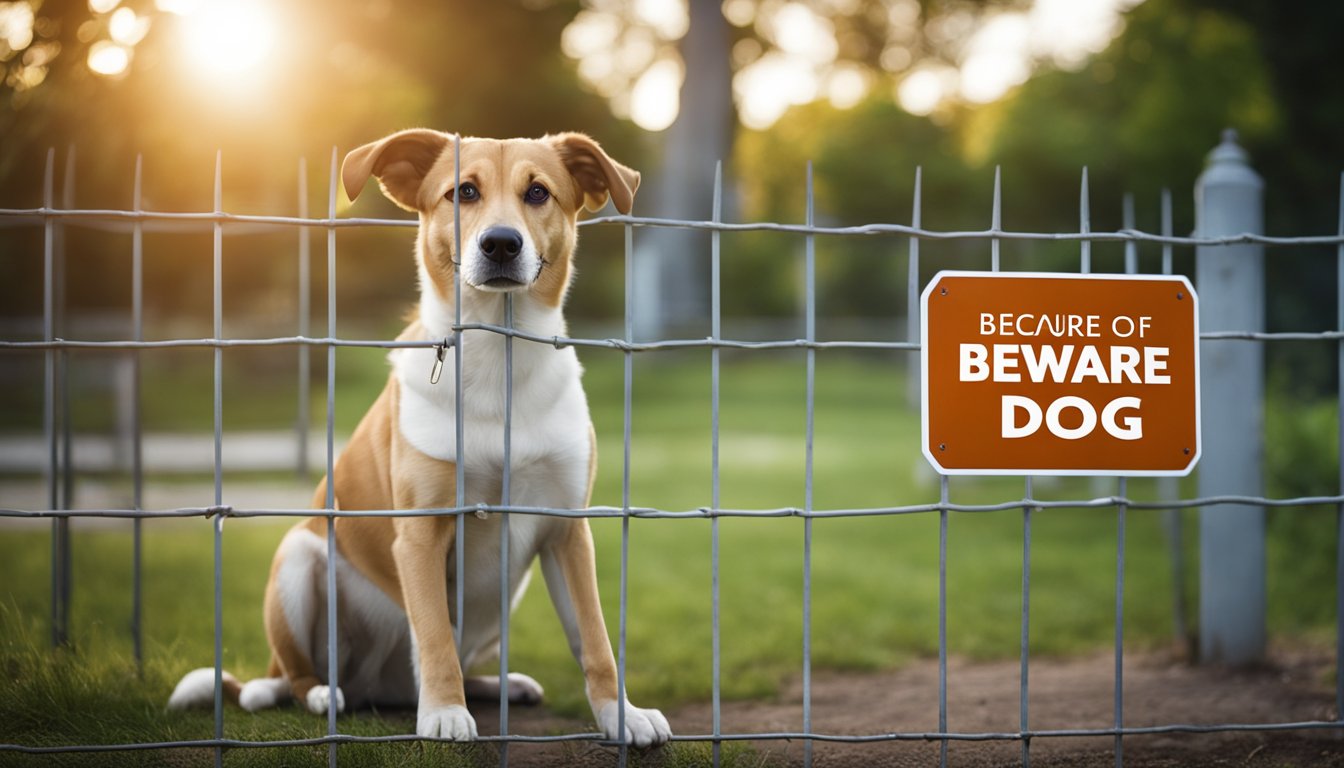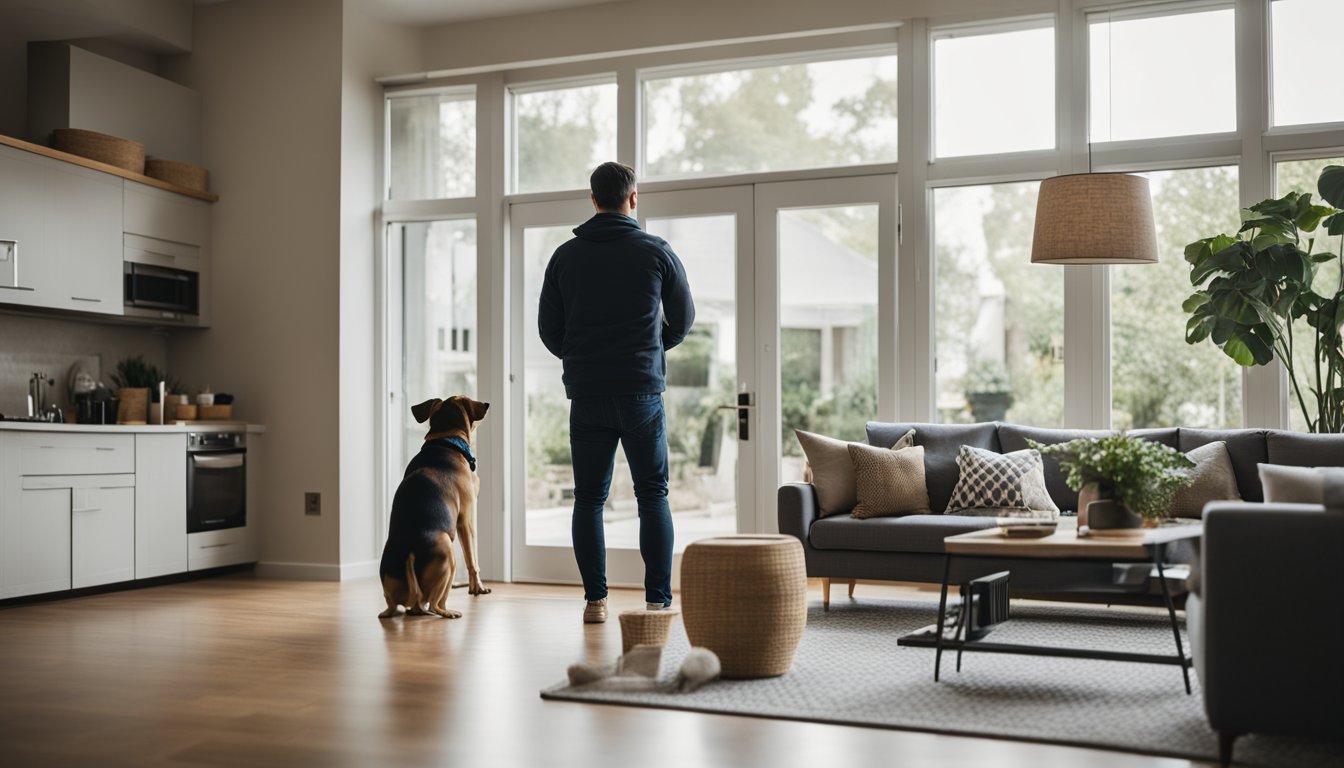Late updated: 24 Nov 2024 15:11
Written by: Elena Prescott
Home Security Tips For Pet Owners: Ensuring Safety And Comfort
Home security isn't just about protecting our possessions; it's about ensuring the safety and well-being of our pets, who are an integral part of our family. As pet owners, we face unique challenges in maintaining both an open, inviting home environment and a secure haven for our pets. Implementing pet-friendly home security measures can significantly reduce risks, such as accidental pet escapes or exposure to household hazards.

Technology plays a vital role in our quest to keep our furry companions safe. Advances in home security systems offer features designed specifically for pet owners, like pet-friendly motion detectors and remote monitoring solutions. These tools empower us to monitor our homes and pets even when we're not physically present, giving us peace of mind.
Through understanding and effectively using these systems, we can create a safe, harmonious environment that meets both our needs and those of our pets. Our exploration today will cover various practical tips and tools that can help pet owners achieve this balance.
Key Takeaways
- Pet-friendly security systems enhance home safety for pets.
- Remote monitoring allows us to watch over pets while away.
- Practical tips can balance home security and pet freedom.
Essential Home Security Systems for Pet Owners
In our homes, ensuring security without compromising our pets' comfort is crucial. A top-performing security system is designed to reduce false alarms and protect our furry friends from potential theft or danger.
The Importance of Home Security Cameras
Home security cameras play a pivotal role in safeguarding our pets. Indoor and outdoor cameras provide live monitoring, allowing us to keep an eye on our pets while we are away. Security cameras can be strategically placed to capture key areas of the home.
Smart cameras equipped with night vision and motion detection enhance security even in low-light conditions. This technology not only helps prevent pet theft but also allows us to monitor unusual activities around the home.
By integrating cameras with our smart home security system, we receive real-time alerts. This feature ensures instant notification about any unexpected activity.
Innovations in Smart Locks and Entry Sensors
Smart locks and entry sensors have revolutionised the ease and safety of home access. These devices enable us to grant temporary access to pet sitters, ensuring our pets are cared for when we can't be there.
Keyless entry systems eliminate the risk of losing keys. We can manage access through our smartphones, providing flexibility and peace of mind. Entry sensors, on the other hand, alert us if doors or windows are opened unexpectedly.
This technology not only aids in preventing unauthorised entry but also reduces the risk of our pets accidentally wandering outside.
Ensuring Safety with Alarms and Motion Sensors
Alarms and motion sensors are indispensable components of a pet-friendly home security system. Pet-immune motion sensors are designed to ignore movements from animals below a certain weight, thus minimising false alarms.
These sensors should be positioned strategically to safeguard various zones without triggering unnecessary alerts as our pets move around. Moreover, robust alarm systems deter potential intruders and reduce the risk of pet theft.
In combination, these features provide comprehensive safety for both home and pets, ensuring that neither is compromised by intrusions or false alarms. Through careful selection and installation, home security systems can seamlessly integrate into the lives of pet owners, offering security and peace of mind.
Protecting Your Pets and Property

In our homes, ensuring the safety of our pets goes hand in hand with protecting our property. We must prevent escapes, safeguard against hazards, and choose security systems suited to our pets' needs.
Preventing Pet Escape and Ensuring Pet Safety
Escaping pets can be a significant worry for owners, often leading to stress or unsafe situations. It's crucial that we take steps to prevent this. Secure all entry points, including doors and windows. Use pet gates to restrict access to areas leading outside.
We can install smart locks to alert us when doors open. Pet tracking collars offer an additional layer of safety. These devices use GPS technology to monitor a pet’s whereabouts. For those using pet sitters or dog walkers, temporary access codes can maintain property security while allowing the necessary access.
Pet-Proofing Hazardous Areas in the Home
Pets, curious by nature, may interact with dangerous household items. We need to identify and pet-proof these areas. Kitchen and bathroom cabinets often hold cleaning products and chemicals that must be secured. Consider using child-proof locks for safety.
In the living area, hide electrical cords and keep small objects out of reach to prevent choking hazards. Balcony and terrace spaces should have safe barriers to prevent falls. We must ensure all plants are non-toxic, avoiding those harmful to pets, like lilies or poinsettias.
Choosing Security Packages with Pet-Sensitive Features
When choosing a security system, consider pet-sensitive motion sensors. These sensors are designed to differentiate between typical pet movements and potential intruders, reducing false alarms. Pet cameras offer a way to monitor our pets remotely.
Systems with two-way audio allow us to interact with our pets, providing reassurance even when we're not at home. Robust customer support is crucial, offering assistance with issues specific to households with pets. Choosing packages that cater to our specific security and pet safety needs ensures a safer, more harmonious home environment for both our pets and property.
Frequently Asked Questions

In addressing common concerns for pet owners, we focus on ensuring the safety of dogs indoors, protecting pets in high-risk areas, adapting home security systems for pet-friendly households, and understanding the role of certain breeds in security. Additionally, we explore legal responsibilities concerning animal control and safe removal of deceased animals from properties.
How can I ensure my dog's safety indoors?
Maintaining a secure indoor environment involves using pet-proof barriers to restrict access to hazardous areas. It's beneficial to secure cabinets with safety locks, remove small objects within reach, and use non-toxic plants. Providing interactive toys can keep dogs engaged and reduce the likelihood of them seeking trouble.
What are effective strategies to protect pets in high-risk areas?
For those living near wildlife or in regions prone to theft, it's advisable to invest in sturdy fencing and ensure gates are securely locked. Installing outdoor motion-sensor lighting can deter potential threats. Routine checks and maintenance of these security features can prevent gaps that could be exploited.
How to adapt home security systems for households with pets?
Home security systems can be tailored by using pet-friendly motion sensors that ignore animals below a certain size. Integrating cameras allows us to monitor our pets remotely, ensuring their wellbeing while away. Smart home features, such as automated lighting, can also simulate occupancy to deter intruders.
Are certain breeds more effective than others for deterring intruders?
Certain dog breeds possess traits that make them natural deterrents to intruders. Breeds like German Shepherds, Rottweilers, and Doberman Pinschers are often favoured due to their strong protective instincts and alert nature. It's crucial to consider training and temperament alongside breed characteristics when evaluating their suitability.
What are the legal considerations for pet owners in regard to animal control?
Pet owners must adhere to local laws concerning leash requirements, vaccination mandates, and licensing. Regulations often dictate liability for any damage or injury caused by pets. Ensuring we understand and comply with these laws can mitigate legal issues and promote responsible pet ownership within the community.
How can pet owners safely remove deceased animals from their property?
When faced with such situations, wearing gloves is essential to prevent direct contact. Using a shovel to transport the animal into a sealed bag or container can minimise exposure. Consulting local animal control or veterinary services for advice or assistance can ensure the process is handled safely and respectfully.
